7 Strange Olympic Events That You Have Never Heard Before
Did you know the Olympic Games, the prestigious and highly anticipated today, have a long history dating back to 776 BC? During the early years, some unusual and extreme competitions emerged but were later discontinued.
The modern Olympic Games were reborn on April 6, 1896, in Athens, 1,500 years after being banned by Roman Emperor Theodosius I. As the modern Games evolved, they became more organized and focused, eliminating less popular or impractical competitions.
Here are some of the quirkier Olympic competitions that you have never heard of.
1. Chariot Racing, circa 684 B.C. to A.D. 393
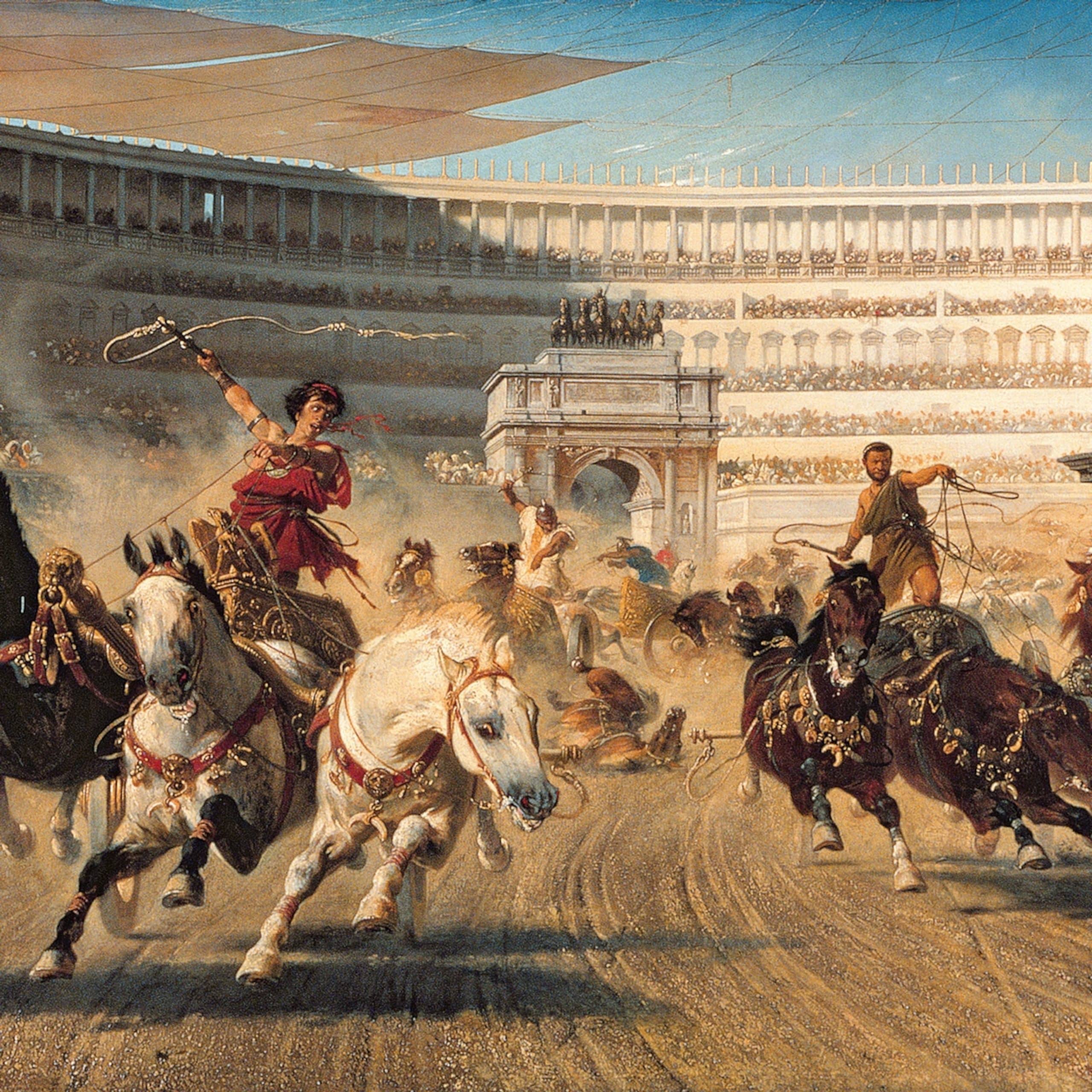
The origins of the Olympic Games can be traced back to ancient Greece, with the first games held in Olympia around 776 B.C. Initially, these games featured only a single event: a foot race.
As time passed, the Olympics evolved, and new sports were introduced to the lineup. One of the most dramatic additions was chariot racing, which began around 684 or 680 B.C.
Chariot races were intense and often dangerous, with drivers competing in horse-drawn chariots and frequently crashing into each other.
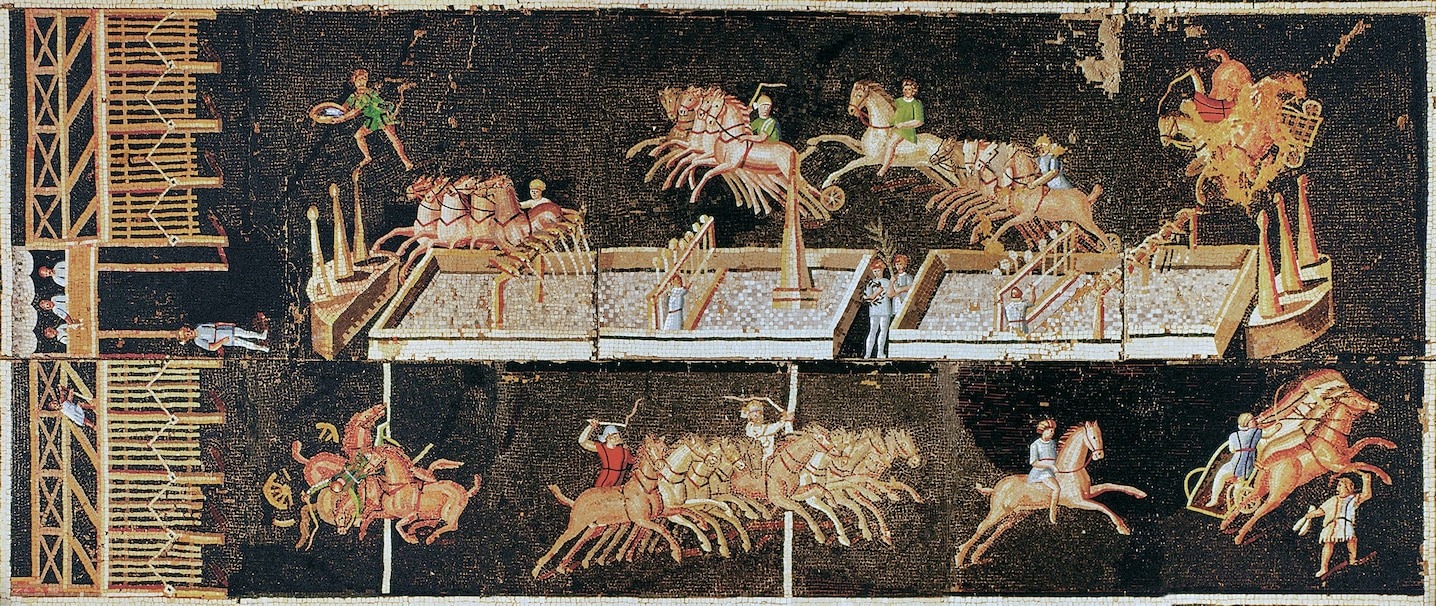
Chariot racing quickly became a highlight of the Games. While the games were exclusively for male athletes, wealthy women found a unique way to participate. Although they were not allowed to compete directly, women could sponsor chariots.
And it was the sponsor who received the victory title, not the racer. This was the only way women could gain recognition in the Olympics.
The first known woman to achieve this was Cynisca, a Spartan princess. Her chariot won the race at the Olympics in both 396 and 392 B.C.
2. Pankration, circa 648 B.C. to A.D. 393

Pankration was one of the most intense and brutal sports in the ancient Olympic Games, blending elements of boxing and wrestling into a fierce competition.
This event was known for its limited rules—only two restrictions applied. As Gary Heaston, a tour guide at the U.S. Olympic & Paralympic Museum, explains, “You could not gouge out your opponent’s eyes and you couldn’t bite your opponent.”
Beyond these prohibitions, competitors could employ almost any technique to gain victory.
One of the most famous pankratiasts was Arrachion, a notable athlete who competed in the Olympics of 564 B.C. His story is both dramatic and tragic.

During a match, Arrachion’s opponent attempted to choke him while Arrachion, in turn, managed to dislocate his opponent’s joint.
The struggle ended in a dramatic fashion: Arrachion succumbed to suffocation just as his opponent signaled his surrender. Despite his death, Arrachion was declared the victor posthumously.
Like Arrachion, winning in pankration often meant paying a high personal price. This ancient sport, which had very few rules and was very demanding, shows how much the ancient Greeks valued strength and endurance in their athletic competitions.
3. Hot Air Balloon Racing, 1900
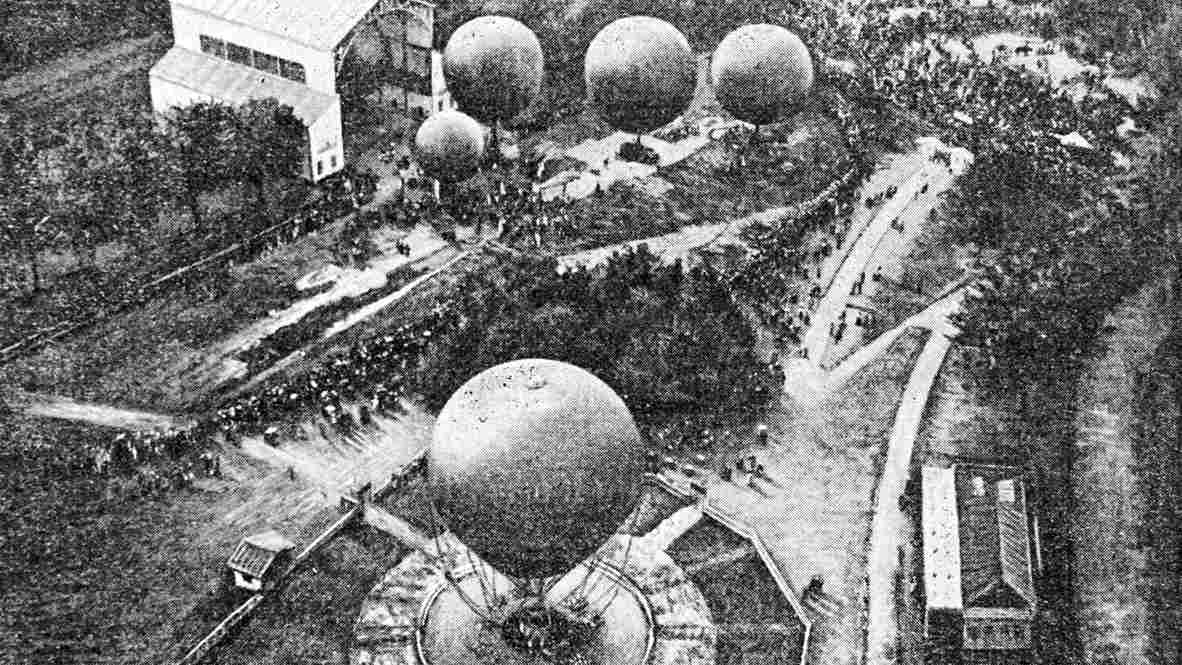
The 1896 Olympics were a brief affair, lasting less than two weeks, but the 1900 Olympics were much more expansive.
Held in conjunction with the World’s Fair in Paris, the 1900 Games stretched from May to October, allowing for a much larger array of events and athletes compared to the previous Olympics.
One of the most unusual features of these Games was the inclusion of hot air balloon contests.
Competitions for hot air balloons included races for distance traveled, altitude achieved, and even the best photograph taken from the balloon. Balloonists also participated in kite flying contests as part of the balloon events.
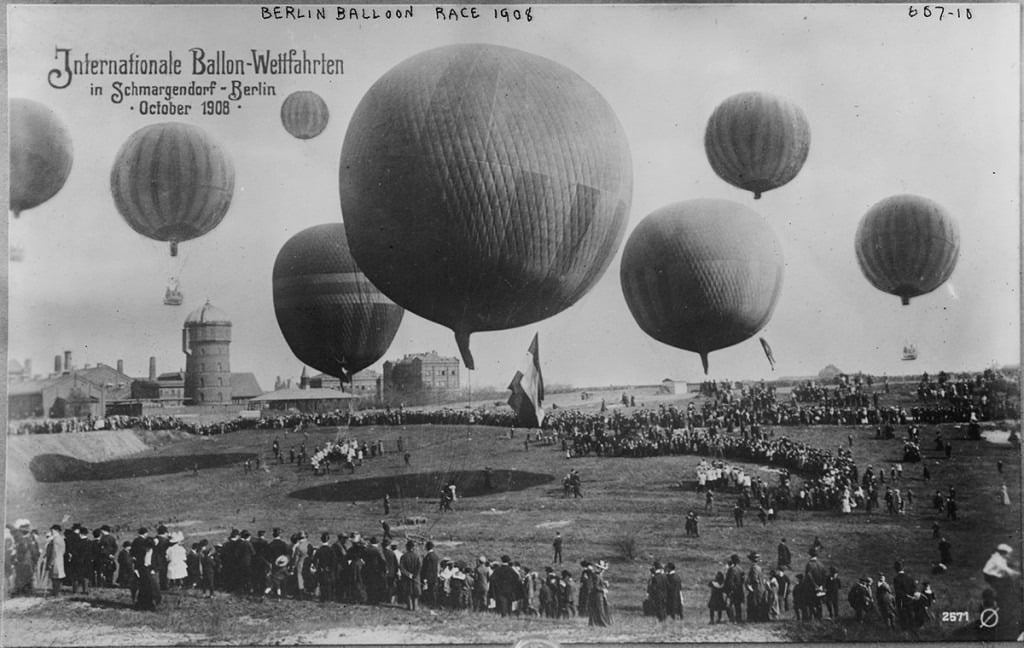
Henry de La Vaulx, a French balloonist, made headlines by winning a distance race. He flew his balloon an impressive 768 miles from Paris to Poland, which was then part of Russia.
His achievement, however, led to an unexpected twist: upon landing, Russian authorities detained him for not having the proper passport documents.
When questioned about his experience in a Russian jail, de La Vaulx humorously remarked, “The Russian officers persecuted me by the opening of so many bottles of French champagne that I was in great distress.”
4. Live Pigeon Shooting, 1900
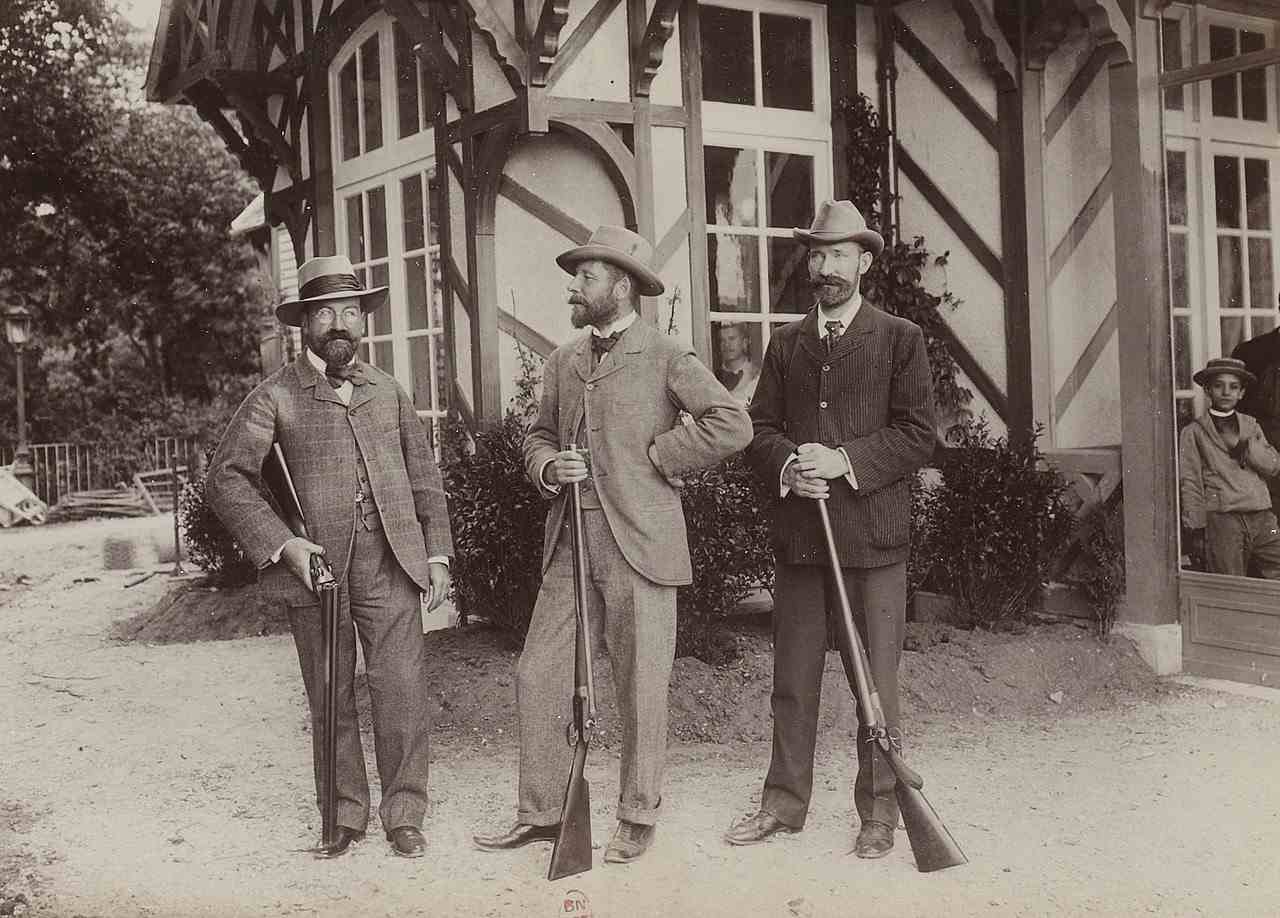
Another unusual event that made its debut at the 1900 Olympics was live pigeon shooting. In this contest, organizers released pigeons into the air, and competitors aimed to shoot as many as they could. The event was won by a Belgian shooter named Leon de Lun, who took down 21 pigeons.
According to Jeremy Fuchs in “Total Olympics: Every Obscure, Hilarious, Dramatic, and Inspiring Tale Worth Knowing,” around 300 pigeons were killed during the competition in total.
This event, like the hot air balloon races, was a one-time feature of the Olympics and never returned to future Games.
5. Tug of War, 1900 to 1920

Tug of War had a surprisingly long run in the Olympics compared to some other unusual sports. It was featured in five Olympic Games before being retired. The sport wasn’t without its controversies, though.
For instance, at the 1908 Olympics in London, American teams accused Liverpool police officers of unfair play because they wore exceptionally heavy boots during the matches, which they claimed gave the British team an unfair advantage.
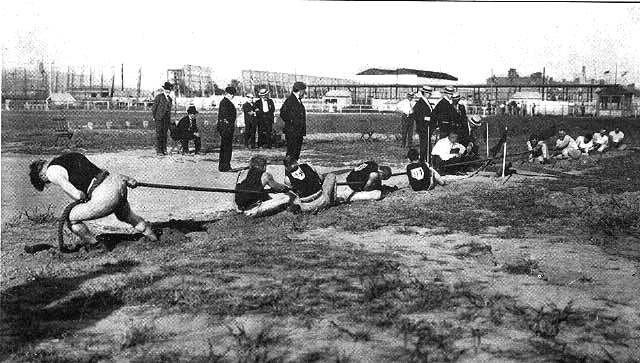
Even after more than a century, enthusiasts of tug of war are still pushing for its return to the Olympic roster. The Tug of War International Federation has been actively campaigning to convince the International Olympic Committee (IOC) to bring the sport back to the Games.
Although tug of war will not be officially included in the 2024 Paris Summer Olympics, there will be a demonstration event to promote the sport.
6. Pistol Dueling, 1906 to 1908
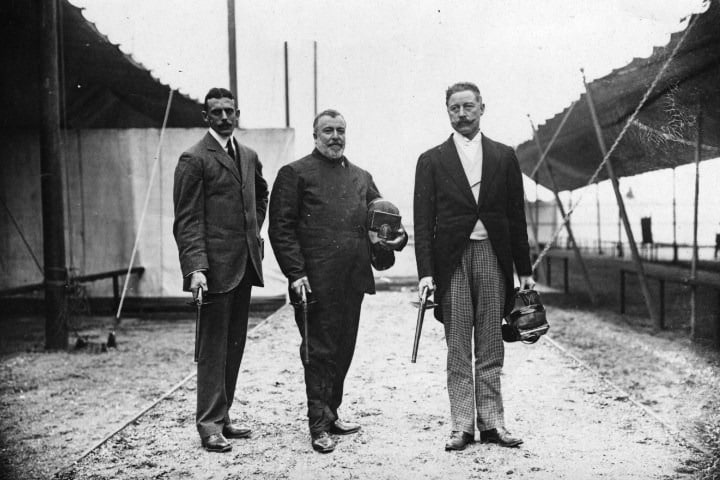
In 1906, Athens hosted the Intercalated Olympic Games, an event that the International Olympic Committee (IOC) does not officially recognize as part of the Olympic history.
Despite this, the Intercalated Games kept the Olympic spirit alive during the chaotic period of world’s fairs.
Notably, these Games introduced several traditions that would later become standard at the official Olympics, such as the parade of nations.
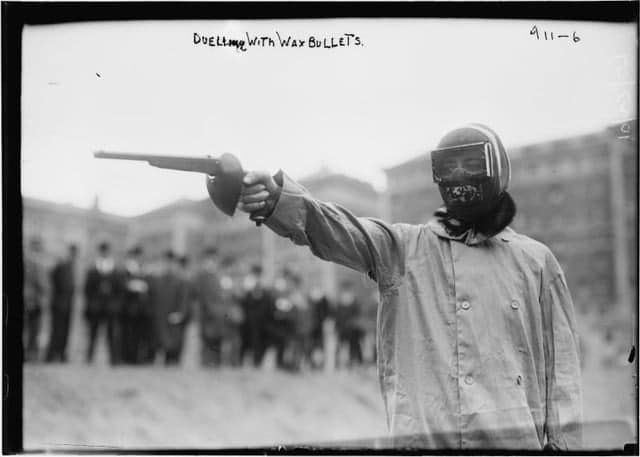
One particularly unique event introduced in 1906 was pistol dueling. According to Jeremy Fuchs in “Total Olympics,” competitors in this event did not shoot at real opponents but rather at dummies.
This returned in the 1908 London Olympics, but with a twist: competitors fired at each other using wax bullets.
7. Painting, 1912 to 1948
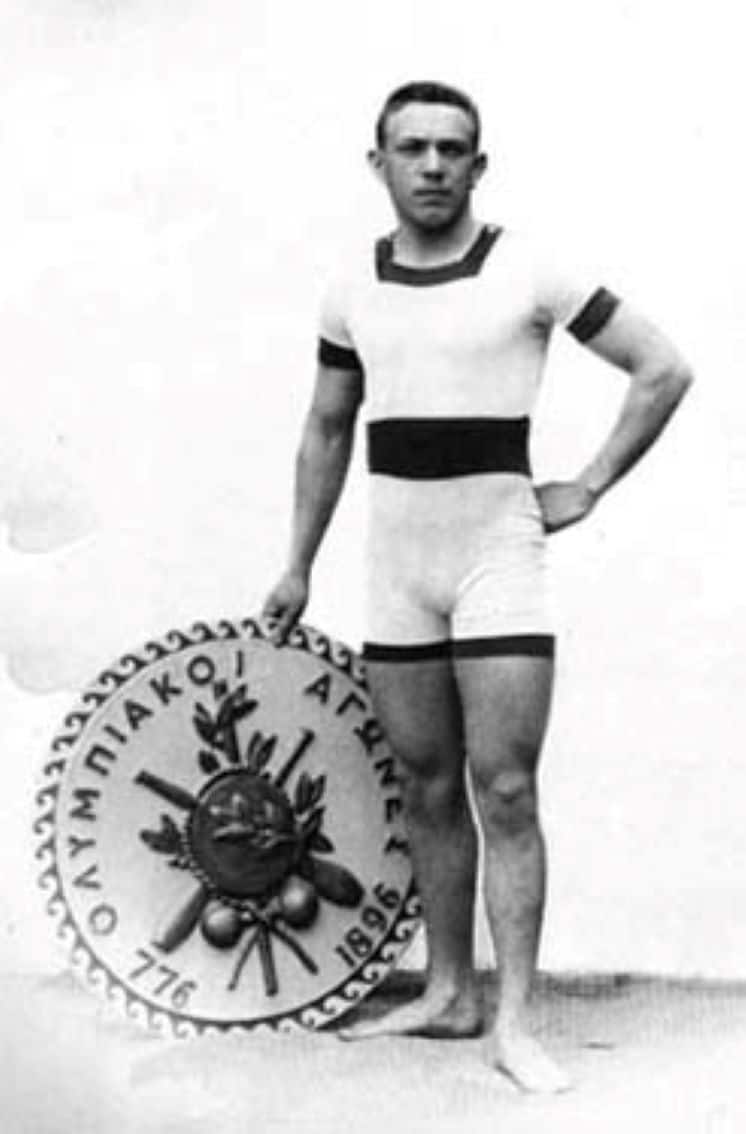
From the 1912 Olympics in Stockholm through to the 1948 Games in London, the Olympics featured art competitions alongside traditional sports. These competitions included categories like painting, sculpture, music, architecture, and literature.
Notably, some athletes participated in both sports and arts events. American Walter Winans was a remarkable example, winning a gold medal in shooting at the 1908 Olympics and another gold in sculpture at the 1912 Games.
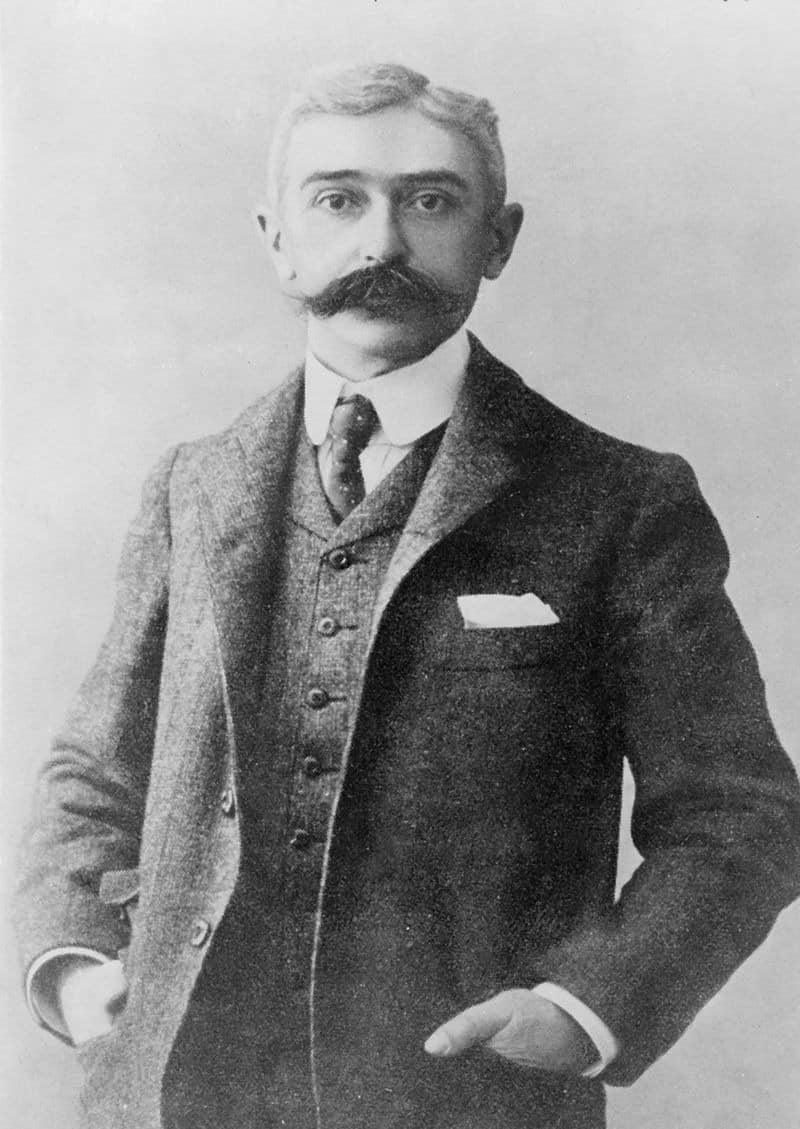
Similarly, Hungarian Alfred Hajos earned two gold medals in swimming at the 1896 Olympics and later secured a silver in architecture at the Paris Olympics in 1924.
The International Olympic Committee (IOC) eventually retired these art competitions, largely due to the involvement of professional artists. The Olympics aimed to spotlight amateur talents—those who did not earn a living from their skills.
This principle of amateurism was strictly enforced by the IOC in athletic competitions until the 1990s when professional athletes were finally permitted to compete.

